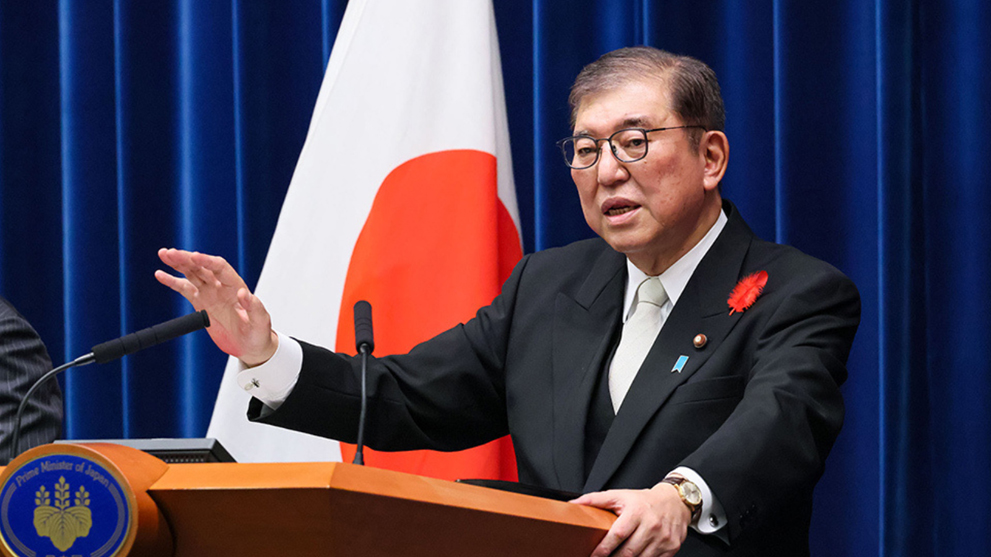Importance of the Upper House Election
The election in Japan’s Upper House (House of Councillors) was held on 20th July in which half of the seats were contested. Although the election in the Upper House does not determine the government- the House of Representative (Lower House) holds the prerogative to elect the Prime Minister, but both the houses exercises legislative powers. Hence, as a result it is crucial for the Prime Minister to ensure majority of its political party in both the Houses for easy passage of bills.
First time in Japan’s History
On July 20, Japan’s long-time ruling Liberal Democratic Party (LDP) and its coalition partner Komeito lost their majority in an election for the Upper House of the Parliament. This has come at a time when Shigeru Ishiba’s party had lost a majority in the Lower House election of Parliament in October 2024. This election has been a major setback for LDP as it was the first time that the party lost majority in both the houses since its inception in 1955.
Yet another important aspect of the Upper House election stems from the fact that it is quintessential to establish stability in the government. If the LDP-Komeito had won the election, they would have established their majority in the Upper House and the opposition would be enticed to join the majority, to form a stable government. On the other hand, the loss of the LDP-Komeito coalition would have clearly paved the way for the opposition to form a government.
The composition of political parties in the Upper House
This election was contested for 125 seats. The 17-days elections mostly covered campaigning issues centred on domestic economic concerns.
The LDP won just 39 seats, a loss of 13 seats. With Komeito’s eight seats, the ruling coalition just won 47 seats. Their coalition was supposed to win 50 seats to maintain a majority in the Upper House. They fell short of 3 seats which changed the dynamics in the Upper House.
The centre-left main opposition Constitutional Democratic Party now has a total of 37 seats in the Upper House. The Democratic Party for the People (DPFP), a centre-right group won 17 seats and increased its total to 22 seats. On the other hand, Sanseito, a far-right group, had won 15 seats. More traditional oppositional parties, such as the conservative Japan Innovation Party and the populist-left Reiwa Shinsengumi also modestly increased their number of seats. All in all this election signifies growing fragmentation in Japan’s political landscape.
The Rise of Far-right in Japan
In the tumultuous time, Sanseito has exploited the politics of grievances which is characterised by political participation around the world. This party has campaigned on the platform “Japanese People First” and it has secured 14 seats. It was set-up on Youtube during the Covid-19 pandemic when it spread conspiracy theories about vaccination and global elites. Sanseito widened its appeal in the run-up to vote railing against immigration. The party’s message resonated with Japan’s domestic situation where global inflation and a devalued yen have pushed up costs particularly for food, after decades of almost flat prices.
The party’s leader Sohei Kamiya, a former supermarket manager and English teacher, says he has drawn inspiration from the “bold political style” of the U.S. President Donald Trump. The Kokumin Democratic Pathemore-conservative of the parties has surprisingly increased its presence.
As Japan’s election system is based on first-past the post system and with 14 parties and a large group of independent and non-aligned candidates to choose from, it is not surprising that the votes were dispersed.
Speculations on Ishiba’s resignation
Internally there is a political battle which is being led. Within the LDP, there are two factions. One factions wants to continue the legacy of late Abe Shinzo’s legacy and those want to curb those nationalist excesses. Ishiba has long been a critic of Abe’s legacy but due to the global pressure with the surge of Trump’s tariff war along with domestic pressures, Ishiba has stuck to “now its not the time to change” approach.
Based on the speculations if Ishiba resigns from the post of Prime Minister, the LDP lawmakers will compete for the position. Post Upper House election, the Yomiuri newspaper conducted a poll which showed Takaichi as the top pick for Prime Minister with 26 percent votes and followed by farm minister Shinjiro Koizumi at 22 percent which would be preferred by the LDP-led government. The other preferred candidates are Shinjiro Koizumi (son of a former Prime Minister) and Toshimitsu Motegi (a former foreign minister).
As stated above, there has been increasing demand within the LDP for Shigeru Ishiba to step-down from the position and to take responsibility for the party’s huge defeat in the July Upper House election and a Lower House poll of last October 2024. Ishiba does not has any plan to resign but his fading support among his party has triggered question about his political future and much of it depends on how Ishiba is going to navigate through fiscal challenges by adopting an appropriate approach to address the same.
Key developments on economic fronts
On July 23rd, Strategic Trade and Investment Agreement was signed by the U.S. and Japan in which Japan will invest $550 billion directed by the U.S. to rebuild and expand core American industries. The aim is to generate thousands of U.S. jobs, expand domestic manufacturing and securing American prosperity for generations.
This trade deal was a result of eight rounds of talks between the two states that began on April 16. In the case of Japan, its exports to the U.S. will be subjected to 15 percent tariff which is reduced from 25 percent. The Japanese automobile sector which was earlier subjected to 25 percent tariff has been reduced to 15 percent including a preexisting tariff of 2.5 percent.
On the domestic economic fronts of Japan, a senior World Bank economist has observed that Japan’s growth has slowed due to the weakness in both domestic and external demand amid concerns over food price inflation and ongoing U.S. tariff war. In addition, Japan’s Gross Domestic Product (GDP) have contracted 0.2.% in the January-March quarters and the same figure of GDP contraction is speculated for April-June quarter.
Although the two quarters of negative GDP growth alone is usually referred to as technical recession, but inflation continues to be at 3 percent and food inflation tops at 6 percent. However according to the report of August 15, GDP figures of Japan for April-June quarter rose to 1.0 percent and quarterly increase of 0.3 percent. This figures suggests a growth in Japan’s private consumption (0.2 percent) which accounts more than half of the economic output. Nevertheless, economic experts are concerned about the 15 percent tariff on Japanese automobile exports to the U.S. and the effects of the same on Japan’s economy is likely to start showing in the upcoming months.
Despite the comparatively positive developments on the economic fronts both at global and domestic level, it will depend on Ishiba on what kind of course he adopts to navigate through the fragmented Upper House. Most importantly the growing unpopularity of Ishiba within LDP will continue be a challenge for his political career.




